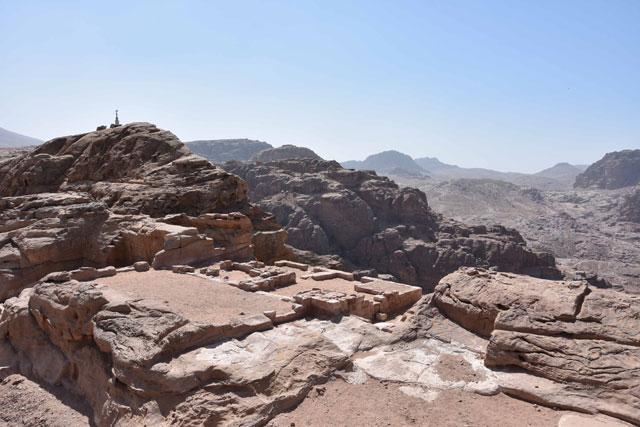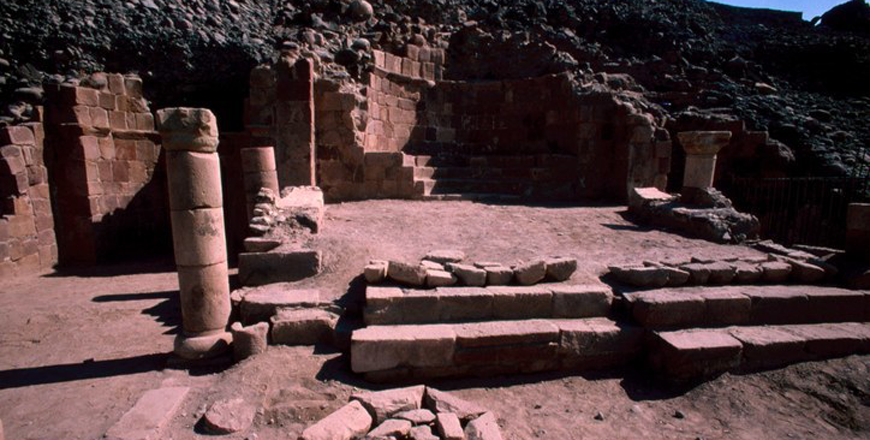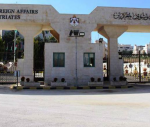You are here
Scholar delves into intricacies of early Islamic architecture near Karak
By Saeb Rawashdeh - Jul 27,2019 - Last updated at Jul 27,2019

Mosaic floor at Shuqayra Al Gharbiyya represents ‘prestigious attributes’ of early Islamic art (Photo courtesy of Younis Shdaifat)
AMMAN — An intricate mosaic medallion and marble capitals unearthed in a building in Shuqayra Al Gharbiyya, near Karak, speak to the wealth of the building’s original inhabitants, a Jordanian scholar recently told The Jordan Times.
A team from Mutah University unearthed the building, which was constructed during the Umayyad and Abbasid periods, according to Professor Younis Shdaifat.
“The fortified building’s design, its well-preserved mosaic floor and marble architectural features recall the prestigious attributes of early Islamic architecture [built between7th and 9th centuries AD] throughout the Levant in places such as Qasr Al Kharaneh and Khirbat Al Mafjar,” Shdaifat said in an e-mail interview.
Located on a commanding position overlooking Wadi Al Hasa, about 25 kilometres southeast of modern Karak, the site attracted explorers in the 19th and 20th century, continued Shdaifat, adding that according to the local tradition the name Shuqayra in Arabic means “little blond girl”, which is a reference to the nearby red and yellow terra rossa soil.
“Nine seasons of excavation have revealed that the large building was constructed with ashlar limestone blocks,” the Mutah University professor said.
However, an area of the site towards Wadi Al Hasa was of particular interest: “A large room with a well-preserved mosaic floor was partly excavated in area C. Its design and features suggests this room functioned as a reception hall. The room measures 22 metres long and 12 metres wide, and is divided lengthwise into three parts by two rows of columns.”
Furthermore, the mosaic pavement is typical of early Islamic craft traditions, the scholar said, adding that only floral and geometric subjects are portrayed; “animals and humans are completely absent”.
“The central medallion faces south and is adorned with a footed vase from which two leafy branches extend. Surrounding this vase are various fruits such as dates, grapes and pomelos. This pavement is well preserved, and because it is the first mosaic floor to be excavated on the Karak Plateau, its prompt conservation and protection was essential,” he underlined.
Water was an important concern for the building’s inhabitants and evidence for a water harvesting and storage system was found throughout the complex, Shdaifat said, adding that a channel built into the flagstone pavement carried precipitation into what was likely a cistern.
The discovery of an Umayyad coin as well as an ostracon bearing what appears to be correspondence written in Kufic calligraphy suggest an early Islamic date, Shdaifat underlined, adding that the ceramic vessel also confirms a date of around the 8th century AD.
“The Umayyad-period vessels discovered include domestic forms such as tableware, cooking pots and jars,” he noted, adding that fine ware bowls with pink and red-painted geometric wavy lines were also found.
Moreover, the building’s architectural elements suggest an early Islamic date and reflect the relative wealth of the building’s inhabitants, the professor said, adding that a number of marble cylindrical drums were discovered.
A splendid marble capital was also found while the upper half is rectangular and decorated with carved flowers, and the lower half is nearly spheroid and decorated with carved plaited, basket-like patterns, Shdaifat said.
“Several of Shuqayra Al Gharbiyya’s features are reminiscent of other early Islamic buildings throughout the Levant,” the researcher concluded.
Related Articles
AMMAN — A Swiss architect and archaeologist has been studying the Nabataean agricultural production in the area around Petra where he
AMMAN — Until now, very little was known about public baths in Petra, according to a French architect affiliated with Ifpo who developed a r
AMMAN — The Dead Sea region has been inhabited since prehistoric times, with thousands of graves dating back to the Neolithic and Bronze Age
















